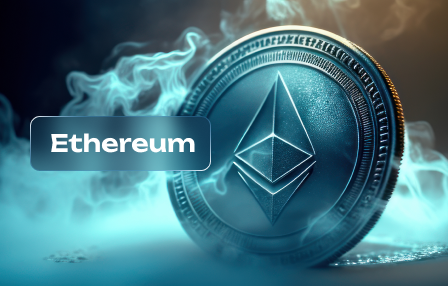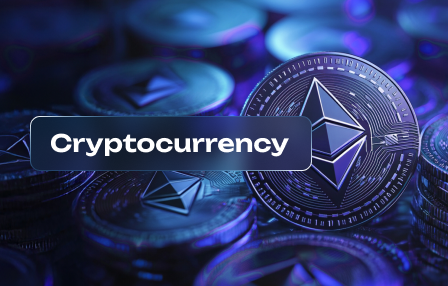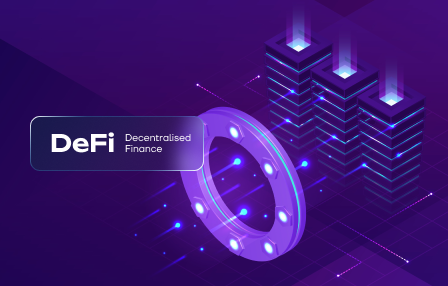What are wrapped tokens and how are they used?
April 24, 2025
Wrapped tokens are pivotal in enhancing liquidity and enabling seamless trading across different blockchain ecosystems. By wrapping a cryptocurrency, users create a token that represents the value of another asset on a different blockchain. This process allows for greater interoperability between networks while maintaining the underlying asset’s security and decentralization.
The primary application of wrapped tokens lies in decentralized exchanges (DEXs), where they facilitate trades without the need for traditional intermediaries. For instance, Bitcoin can be wrapped as WBTC (Wrapped Bitcoin) on the Ethereum network, allowing it to be utilized in various DeFi applications. This not only broadens access to financial services but also introduces smart contracts into transactions involving previously isolated assets.
Investors can leverage wrapped tokens to optimize their portfolios by taking advantage of diverse trading opportunities across multiple platforms. With the growing adoption of these tokens, understanding their mechanics and potential applications is critical for navigating the evolving cryptocurrency landscape effectively.
What Are Wrapped Tokens?
Wrapped tokens are digital assets that represent another cryptocurrency on a different blockchain. They facilitate interoperability between networks, allowing users to trade and utilize assets across various platforms.
Key characteristics of wrapped tokens include:
- Smart Contracts: Wrapped tokens are governed by smart contracts, ensuring security and trustless interactions during transactions.
- Blockchain Compatibility: These tokens allow non-native assets to interact seamlessly with different blockchains, enhancing liquidity and trading opportunities.
- Decentralization: Wrapped tokens promote decentralized finance (DeFi) by enabling users to access various financial services without relying on centralized exchanges.
The wrapping process typically involves locking the original asset in a secure contract, which then mints an equivalent amount of the wrapped token. This ensures that each wrapped token is fully backed by the original asset, maintaining its value.
Applications of wrapped tokens include:
- Cross-Chain Trading: Users can trade wrapped tokens on multiple exchanges without needing to convert their assets back and forth between blockchains.
- Lending and Borrowing: Wrapped tokens can be used as collateral in DeFi lending protocols, increasing options for users seeking loans or yield generation.
- Diverse Investment Strategies: Investors can gain exposure to different markets by utilizing wrapped versions of popular cryptocurrencies on alternative blockchains.
The most notable example is Wrapped Bitcoin (WBTC), which allows Bitcoin holders to participate in Ethereum-based DeFi applications while retaining the value of their BTC holdings. This model has encouraged broader participation in decentralized ecosystems, highlighting the importance of wrapped tokens in contemporary crypto trading strategies.
How to Create Wrapped Tokens?
To create wrapped tokens, follow a structured approach utilizing blockchain technology and smart contracts. Begin by selecting the underlying asset you wish to wrap, ensuring it has a stable market presence. Next, deploy a smart contract on a compatible blockchain that facilitates token wrapping.
The contract should define the rules for minting and redeeming wrapped tokens, ensuring transparency and security in the process. When users provide the underlying assets, your contract will mint an equivalent amount of wrapped tokens, which can be traded or utilized within decentralized applications.
Implement robust mechanisms for liquidity management to ensure that trading remains fluid. This may include integrating with decentralized exchanges (DEXs) or liquidity pools to enhance accessibility and market depth for your wrapped tokens.
Test the functionality thoroughly before launching. Engage community feedback to improve usability and address any potential vulnerabilities in the smart contract code. Once validated, announce your wrapped token on various cryptocurrency platforms to attract traders and investors.
Monitor ongoing performance and engage with users actively for updates and improvements. Keeping track of trading volume and liquidity metrics will help gauge success and inform future iterations or new wrapped token projects.
Use Cases in DeFi
Wrapped tokens enhance trading opportunities by allowing users to transact with a variety of assets on different blockchain networks. For instance, WBTC (Wrapped Bitcoin) enables Bitcoin holders to access Ethereum-based decentralized finance (DeFi) applications, increasing liquidity and enabling the use of BTC in smart contracts.
Another application is yield farming, where users can stake wrapped tokens in liquidity pools to earn rewards. This process not only provides additional returns on idle assets but also enhances overall market liquidity.
Wrapped tokens facilitate easier cross-chain exchanges. By converting native assets into wrapped versions, traders can seamlessly swap between blockchains without losing value or incurring high fees typical of traditional exchanges.
Risk management strategies also benefit from wrapped tokens. Investors can hedge positions or diversify portfolios using wrapped assets that represent value from other cryptocurrencies, ensuring better risk exposure management.
Finally, developers leverage wrapped tokens for creating synthetic assets that mimic real-world asset behavior on the blockchain. This opens new avenues for investment strategies and derivative products within DeFi ecosystems.
Benefits of Using Wrapped Tokens
Wrapped tokens enhance liquidity across different blockchain networks, allowing users to exchange assets seamlessly. By converting a native cryptocurrency into a wrapped version, traders can access various decentralized finance (DeFi) platforms without being limited by the original blockchain’s constraints.
Smart contracts facilitate the creation and management of wrapped tokens, ensuring transparency and security during transactions. This technology minimizes counterparty risks while maintaining asset integrity, making it an appealing choice for investors seeking reliable trading options.
The interoperability provided by wrapped tokens enables cross-chain exchanges, significantly expanding market opportunities. Users can leverage price discrepancies between different blockchains to optimize their trading strategies and increase returns on investment.
Additionally, wrapped tokens support the growing demand for diversification within cryptocurrency portfolios. By holding wrapped assets, investors gain exposure to multiple markets while retaining the benefits of their underlying tokens.
In summary, wrapped tokens are essential for enhancing liquidity, improving cross-chain capabilities, and enabling strategic investment approaches in the rapidly evolving landscape of cryptocurrencies.
Risks and Challenges Involved
Investors should conduct thorough research before engaging with wrapped tokens. Smart contract vulnerabilities pose significant risks, as flaws can lead to loss of assets or funds. Regular audits by reputable firms are essential to mitigate these threats.
Centralization issues arise when wrapped tokens depend on a single custodian for asset backing. This creates a point of failure; if the custodian is compromised, users may lose trust in the token’s value and functionality.
Liquidity challenges also exist, particularly for less popular wrapped tokens. Insufficient trading volume can result in wide spreads on exchanges, making it harder to buy or sell without incurring significant costs.
Regulatory uncertainty presents another challenge. As jurisdictions evolve their approaches to cryptocurrency, wrapped tokens could face scrutiny that impacts their usability and acceptance across platforms.
Market volatility is another concern. Wrapped tokens can experience price fluctuations that may not align with their underlying assets due to market speculation or trading behavior, leading to unexpected losses for traders.
Finally, interoperability issues among different blockchains can hinder the seamless transfer of wrapped tokens between networks. This can complicate trading strategies and limit access to potential opportunities across various decentralized platforms.



